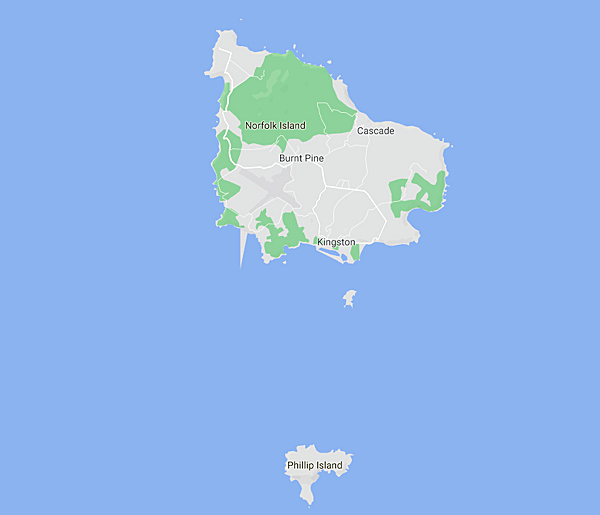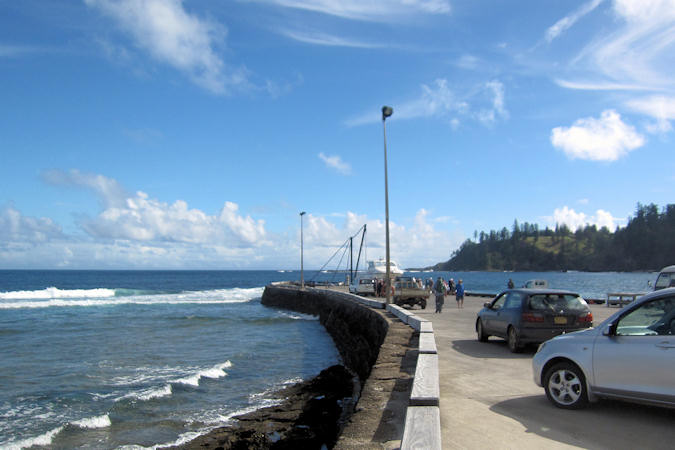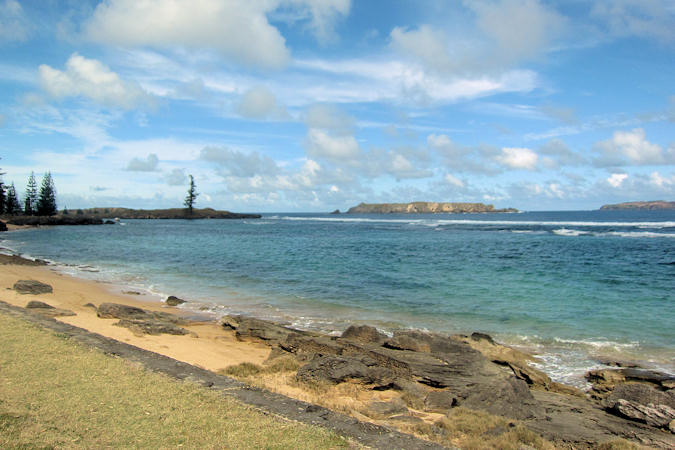Australia
Things to DO
Norfolk Island

Norfolk Island is an external territory of Australia located in the Pacific Ocean between New Zealand and New Caledonia,
1.412 kilometres directly east of Australia's Evans Head. Together with the neighbouring Phillip Island and Nepean Island,
the three islands collectively form the Territory of Norfolk Island. At the 2016 census, it had 1.748 inhabitants living on a total
area of about 35 km2. Its capital is Kingston.
Norfolk Island was uninhabited when first settled by Europeans, but evidence of earlier habitation was obvious.
Archaeological investigation suggests that, in the thirteenth or fourteenth century, the island was settled by East Polynesian
 |
|||||
Seafarers, either from the Kermadec Islands north of New Zealand, or from the North Island of New Zealand.
Ultimately, the relative isolation of the island, and its poor horticultural environment, were not favourable to long-term settlement.
The first European known to have sighted and landed on the island was Captain James Cook, on 10 October 1774, on his second
voyage to the South Pacific on HMS Resolution. He named it after Mary Howard, Duchess of Norfolk.
The island served as a convict penal settlement from 6 March 1788 until 5 May 1855, except for an 11-year hiatus between 15
February 1814 and 6 June 1825, when it lay abandoned.
On 8 June 1856, permanent civilian residence on the island began when descendents of the Bounty Mutineers were relocated from
Pitcairn Island.
In 1914 the UK handed Norfolk Island over to Australia to administer as an external territory. In 1979, Norfolk Island was granted
limited self-government by Australia, under which the island elected a government that ran most of the island's affairs.
 |
|||||
The island's highest point is Mount Bates reaching 319 metres above sea level, located in the northwest quadrant of the
island.
The area surrounding Mount Bates is preserved as the Norfolk Island National Park. The park, covering around 10% of the land
of the island, contains remnants of the forests which originally covered the island, including stands of subtropical rainforest.
As a relatively small and isolated oceanic island, Norfolk has few land birds but a high degree of endemicity among them.
Many of the endemic bird species and subspecies have become extinct as a result of massive clearance of the island's native vegetation
for agriculture, hunting and persecution as agricultural pests.
The birds have also suffered from the introduction of mammals such as rats, cats, pigs and goats, as well as from introduced competitors
such as common blackbirds and crimson rosellas.
This is a selection
of the birds i have seen there.